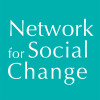The position of lesbians, gays and transgender people has varied consider-ably over time and in different cultures, and still varies strikingly between different countries despite the 2001 UN Declaration for global decriminalization of homosexuality. In 2014, whilst lesbian and gay couples in Britain and an increasing number of states of the USA were celebrating their new right to get married, in some countries gays and lesbians still face the death penalty, and ILGA (International Lesbian Gay Bisexual Trans and Intersex Association) noted in their 2014 world survey of laws that in 2013 there were worrying developments in India, Uganda, Nigeria and Russia. In all countries lesbians, gays and trans can be subjected to bullying and hate crimes, and police violence has often been an issue. The major gains in rights in the west since the 1950s have generally been the result of sustained campaigning for legal change and through the assertion of LGBT identity and community (for example through gay pride marches) and direct action. LGBT activism has become a transnational movement challenging repression and pressing for greater rights and has its own international organizations.
The position on LGBT rights is changing quite quickly. In June 2015 the US Supreme Court ruled (by a majority of five to four) that same-sex couples have a constitutional right to marry, and that therefore state bans on same-sex marriage were unconstitutional. There have also been in 2015-16 potentially positive developments in India (see G.3.) and for Trans people (see G.4.a.).
Gay Liberation arose in the context of the Civil Rights Movement in the USA, the student protests of 1968, resistance to the Vietnam War (see section E.1) and in parallel with the Second Wave of feminism (see section F.1). It reflected the new willingness to challenge long-held beliefs, aspiration for a fundamental change in society, and the adoption of a more confrontational style of campaigning and assertion of identity. The ferment of ideas and protests led to ideological and organizational splits , but this did not undermine the momentum towards cultural and social change in the west (although deep seated attitudes and discrimination are not easily altered, as the Fourth Wave of feminism also testifies). The Gay Liberation movement created bookshops, newspapers and journals, encouraged a new literature and prompted new academic courses.
LGBT activists have often had links with others social movements, most obviously in the overlap between lesbian activists and feminism. There have also been demonstrations of solidarity between movements – for example ACT UP and the Health GAP challenging policies on HIV/AIDS joined a Global Justice Movement protest in Washington DC in April 2000, and earlier the London-based Lesbians and Gays Support the Miners (LGSM) was active during the strike of 1984-45 (for references see A.1.a.ii.). There have also been connections with the peace movement, notably at the Greenham Common Women’s peace camp in the 1980s (see Sasha Roseneil, Common Women, Uncommon Practices: The Queer Feminism of Greenham, London, Cassell, 2000 , pp. 352 )
There is, however, a long history of often more discreet attempts to assert lesbian and gay identity and to achieve legal reforms, partly covered in the next section. We list below a few books providing an introductory overview of historical change and campaigns:

 The online version of Vol. 1 of the bibliography was made possible due to the generous support of the
The online version of Vol. 1 of the bibliography was made possible due to the generous support of the  The online version of Vol. 2 of the bibliography was made possible due to the generous support of
The online version of Vol. 2 of the bibliography was made possible due to the generous support of